Breast MRI
Breast MRI
Breast MRI (magnetic resonance imaging) uses a magnetic field and radio waves to produce images of breast tissue. This highly advanced technology is used for both screening and diagnostic exams, providing valuable information in the detection and characterization of breast disease. Breast MRI is a particularly useful tool for patients who are at higher risk for developing breast cancer.
Breast Ultrasound
Breast Ultrasound
Breast ultrasound uses sound waves to generate images of breast tissue. This technology often is used to evaluate areas of concern, like a breast lump, or as a follow-up to an inconclusive mammogram. Breast ultrasound also can be used in tandem with diagnostic mammography, as it allows physicians to zoom in on a specific area, while mammography images are used to evaluate the entire breast.
Screening Mammography
Screening Mammography
Breast cancer is one of the most common cancers in women, but it's also one of the most treatable. Annual mammograms are the only screening method that have consistently proven to reduce cancer deaths. Here, we utilize 3D mammography, the most advanced screening technology available, as the standard of care. Schedule your screening mammogram today.
Diagnostic Mammography
Diagnostic Mammography
Diagnostic mammograms provide useful information in the assessment of breast health. They often are ordered as a follow-up to regular screening mammograms so that physicians might further evaluate areas of concern. Diagnostic mammograms also are used for patients who are experiencing a new breast symptom.
Breast Biopsy
Breast Biopsy
Biopsies are the only definitive way to confirm whether breast tissue is benign or cancerous. This safe, minimally invasive procedure is performed to further explore an area of concern identified on a diagnostic mammogram or other imaging test. A small amount of breast tissue is removed through a needle and sent to a lab for testing and diagnosis.
Early Intervention Breast Clinic
Early Intervention Breast Clinic
All women are at risk for breast cancer and should have a risk assessment by age 30. Learning more about breast cancer risk can be the first step in catching it at its earliest, most treatable stage. Our Early Intervention Breast Clinic was created to provide our patients with the opportunity to proactively participate in their breast health and cancer risk reduction.
Contrast Enhanced Mammography (CEM)
Contrast Enhanced Mammography (CEM)
Genetic Testing
Genetic Testing
Schedule an Appointment?
Annual screening mammograms are recommended for all women 40+ with no evidence of breast disease. Physician referrals are not required, and most insurance plans cover these at 100%.
ScheduleARA Health Divisions
Visit The Vein Specialists and Carolina Vascular for specialized treatments to meet your vein and vascular needs. As divisions of ARA Health, you can count on the same trusted physicians and the same top-rated, compassionate care you've come to expect from us.

From scheduling screenings and imaging appointments to coordinating biopsies, treatments, patient preps, and follow-up appointments, we want to help our patients efficiently navigate a system that can feel complex and overwhelming. Our ARA Cares platform provides patients with direct access to a dedicated team of professionals who are solely focused on meeting each patient's specific needs. ARA cares, and we're here to help.



